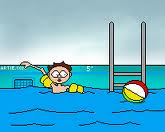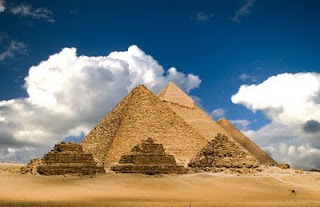i write creatively light verse of allegories and satire using six questions who, what, when, where, why and how.
Sunday, December 25, 2011
Friday, December 23, 2011
Evolution of Angels:An angel takes Christmas-y form on a 14th-century Italian chapel wall.

'Tis the season for winged humanoids to alight everywhere from store windows to Christmas tree tops to lingerie runways. But it wasn't always so.
Angels, at least the Christian variety, haven't always been flying people in diaphanous gowns. And their various forms—from disembodied minds to feathered guardians—reflect twists and turns of thousands of years of religious thought, according to an upcoming book.
Saturday, December 17, 2011
Supermassive Black Hole About to Eat Gas Cloud?
Wednesday, December 14, 2011
Last Weekend's Lunar Eclipse

Lunar Eclipse Pictures:Seen in a composite picture taken from Sweden on Saturday, the moon emerges from the last total lunar eclipse for three years.
The entire lunar eclipse was visible from East Asia, Australia, and the far western part of North America that includes Alaska and Canada's Yukon and Northwest Territories.
In Sweden and the rest of northern Europe, the full moon emerged from Earth's shadow as the natural satellite rose on Saturday night.
Wednesday, December 7, 2011
An underwater sculpture park filled with "bodies" feature among the most viewed Nat Geo News photo galleries of 2011.

Created by Mexico-based British sculptor Jason deCaires Taylor, the Caribbean installation is intended to eventually cover more than 4,520 square feet (420 square meters), which would make it "one of the largest and most ambitious underwater attractions in the world," according to a museum statement.
In doing so, Taylor hopes Mexico's natural reefs, which are already stressed by marine pollution, warming waters, and overfishing, can catch a break from the approximately 750,000 tourists who visit the area each year.
Friday, December 2, 2011
Happiness Hot Spots:Denmark

A woman rides a bicycle on one of Copenhagen’s wide, double bike lanes. According to the World Database of Happiness, Denmark is the second happiest country in the world (behind Costa Rica). Thrive author Dan Buettner attributes part of this satisfaction to walkable, bikeable cities. Recreation, including high-quality parks, is accessible to everyone. Though Denmark’s marginal tax rate is high, surveys show Danes tolerate it for the payoff: public services that include health care for all and free education. Danes also benefit from trust in their public officials, as well in their neighbors, with whom they share a sense of equality about social status.
In his book Thrive: Finding Happiness the Blue Zones Way, Dan Buettner explores four places identified by researchers as world leaders in happiness—pockets around the globe where people report more happiness, enjoyment, interest, and respect.
Labels:
happiness,
people,
places,
respect,
World Championships
Tuesday, November 22, 2011
Sami Herder, Scandinavia
Tuesday, November 15, 2011
Friday, November 11, 2011
Langurs, Rajasthan state, India
Monday, November 7, 2011
Thomson's Gazelle, Lake Nakuru
Sunday, October 30, 2011
Snowy Owl On The Hunt
Monday, October 24, 2011
400 Trillion Miles Away, a Comet Storm Waters a World
Wednesday, October 19, 2011
Julian Barnes wins the 2011 Man Booker Prize
Tuesday, October 18, 2011
National Geographic Expeditions Winners, 2011 Photo Contest
Friday, October 14, 2011
Ice Canopy, Japan
Sunday, October 9, 2011
Meteor Shower

Comet 21P/Giacobini-Zinner, the source of the Draconid meteor shower, is seen in a 1998 picture.
The possibility of a meteor storm has NASA and other spacecraft operators keeping keen eyes on how the Draconids might affect the International Space Station (ISS) and other satellites currently in Earth's orbit.
Labels:
Earth,
International Space station,
Meteor,
satellites
Thursday, October 6, 2011
Nobel Prize for Literature 2011 won by Tomas Tranströmer

Swedish poet Tomas Transtromer has won the 2011 Nobel literature prize.
The academy said it awarded the 80-year-old poet "because, through his condensed, translucent images, he gives us fresh access to reality."
Transtromer wins the £942,000 prize - the richest in the world of books.
After publishing 10 volumes of poetry, Tranströmer suffered a stroke in 1990 which affected his ability to talk.
After a break of six years, he came back with Grief Gondola, a book that sold 30,000 copies in his native Sweden, a stunning figure by poetry standards.
Following this success, Tranströmer published nothing for eight years, except for his correspondence with Bly, before returning in 2004 with a collection of 45 haikus, Japanese-style poems invoking an aspect of nature or the seasons.
Tuesday, October 4, 2011
The Nobel Prize in Physics 2011
Saturday, October 1, 2011
Thursday, September 29, 2011
2011 British Wildlife Photography Awards
Sunday, September 25, 2011
Wednesday, September 21, 2011
African Ambush:Crocodile Attacks Elephant
Saturday, September 17, 2011
Space launch System artist concepts NASA Announces Design for New Deep Space Exploration System
NASA is ready to move forward with the development of the Space Launch System -- an advanced heavy-lift launch vehicle that will provide an entirely new national capability for human exploration beyond Earth's orbit.
Monday, September 12, 2011
Tennis:US Open Women's Singles title 2011
Tuesday, September 6, 2011
Usain Bolt's Jamaica set world record in 4x100m gold in 37.04sec
Tuesday, August 30, 2011
Hurricanes: The Sound and the Fury

It took Clifford Ross a few years of photographing hurricanes and being dissatisfied with the results before he realized that the central drama was in the ocean. And that if he wanted to capture it, he’d have to get in it. “There’s an apocryphal tale that Turner lashed himself to a ship’s mast” says Ross describing the 19th century painter’s desire to depict stormy seas.
The artist, a New York City native, first became interested in photographing hurricanes in the mid-’90s, he thought he’d be chasing them all over the world. Until he realized he could just stay put on Georgica Beach, a few miles from his Long Island home. “I sit like a fisherman and wait,” says Ross who lenses eight to 12 storms per year. He doesn’t use waterproof cameras, “I don’t want anything between me and the wave,” says Ross. Despite photographing in water anywhere from his ankles to his neck, “the camera and I have both survived,” says Ross. “Its like dancers who say they leave their body during a performance. I’m so riveted by what I see, and trying to stay upright, I don’t feel any fear.”
photography
Friday, August 26, 2011
Egyptian pyramids

There are 138 pyramids discovered in Egypt as of 2008.Most were built as tombs for the for the country's Pharaohs and their consorts during the Old and Middle Kingdom periods. The Pyramid of Khufu at Giza is the largest Egyptian pyramid. It is the only one of the Seven Wonders of the Ancient World still in existence.
Tuesday, August 23, 2011
Jurassic Period

The Jurassic is a geologic period and system that extends from about 199.6± 0.6 Mya (million years ago) to 145.5± 4 Mya, that is, from the end of the Triassic to the beginning of the Cretaceous. The Jurassic constitutes the middle period of the Mesozoic Era, also known as the Age of Reptiles. The start of the period is marked by the major Triassic–Jurassic extinction event. However, the end of the Jurassic Period did not witness any major extinction event.
Saturday, August 20, 2011
Arctic Ocean
Wednesday, August 17, 2011
Mount Everest

Upon seeing Mount Everest clearly for the first time in 1921 after weeks of travel, George Leigh Mallory wrote, "It was a prodigious white fang, an excrescence from the jaw of the world. We saw Mount Everest."
Mount Everest is the world's highest mountain, with a peak at 8,848 metres (29,029 ft) above sea level. It is located in the Mahalangur section of the Himalayas on the Nepal side of Nepal-China (Tibet) border
Sunday, August 14, 2011
Compelling New Evidence for Flowing Water on Mars

A combination image made with 3-D modeling illustrates possible evidence of liquid water active on Mars today.
NASA / JPL-Caltech / Uinversity of Arizona / Reuters
In a paper published this week in the journal Science and announced at a press conference at NASA's Jet Propulsion Laboratory (JPL) in Pasadena, mission scientists revealed the appearance of seasonal streaks at key points on the Martian surface, looking for all the world like the tracks of water rivulets running down-slope, collecting at the base of the incline and then evaporating back into the atmosphere.
Mars Reconnaissance Orbiter (MRO), which has been circling the Red Planet since 2006, have produced the first compelling evidence of flowing, salty water on the Martian surface. Water may mean biology — and biology, of course, would mean Martians.
Wednesday, August 10, 2011
NASA's Juno to circle Jupiter for 'planetary recipe'

An artist's rendition released by NASA shows the Juno spacecraft orbiting Jupiter.
Now en route to Jupiter, NASA’s Juno spacecraft has begun its five-year cruise to the giant planet.Juno is set for arrival at Jupiter in July 2016. The spacecraft will orbit the massive planet for about one year (33 orbits) and will end with de-orbit into the gaseous world.Juno roared off into Florida skies on Friday, August 5th.
Thursday, August 4, 2011
Dolphins:amazing animals with problem-solving super powers!

Dolphins are marine mammals that are closely related to whales and porpoises.Most dolphins have acute eyesight, both in and out of the water, and they can hear frequencies ten times or more above the upper limit of adult human hearing.Dolphins are often regarded as one of Earth's most intelligent animals.
Sunday, July 31, 2011
Tuesday, July 26, 2011
Pass Out the Cigars! Pluto Is a Papa By Michael D. Lemonick

An image of the Pluto system taken by the Hubble Space Telescope's Wide Field Camera 3 ultraviolet visible instrument with newly discovered fourth moon P4 circled, taken on on July 3, 2011.
NASA / ESA / M. Showalter (SETI institute)
The image that popped up in Hubble's gallery on June 28 didn't show any rings — but it did show that Pluto has a moon nobody knew about.
Tiny P4 should have a real name. "We're tossing around some ideas," says Showalter, "but the name has to come out of Greek mythology associated with Hades and the underworld." That's according to the International Astronomical Union, which has to formally approve the names of heavenly objects — and which has strict and sometimes arcane guidelines for what's permitted. Underworld myths are the rule for moons of Pluto; for moons of Uranus, it's got to be characters from the works of Shakespeare and Alexander Pope — specifically Pope's poem "The Rape of the Lock." That required Showalter to learn the verses well. "I'm the discoverer of two moons of Uranus," he says. "We named them Cupid and Mab."
Friday, July 22, 2011
How Did the Leopard Get His Spots? Scientists Explain -By: Frances Perraudin

A new study from researchers at Bristol University in the U.K. has shown that author Rudyard Kipling was more right than you'd think.
In Rudyard Kipling's famous Just So Stories of 1902, the ‘How The Leopard Got His Spots' story describes how an Ethiopian hunter paints spots on a leopard to help it blend into the “speckly, patchy-blatchy shadows” of the forest. “Apart from the painting part, Kipling was quite right,” said Allen to the Guardian. “The leopard got its spots from a life in forested habitats, where it made use of the trees and nocturnal hunting.
Monday, July 18, 2011
PAINTINGS BY RAJA RAVI VARMA-Mother & Child

Raja Ravi varma (1848 - 1906) is famous for his paintings based on Indian mythology & epics. He was was born in Kilimanoor Palace as the son of Umamba Thampuratti and Neelakandan Bhattathiripad. Even at the young age his talent was spotted by his uncle Raja Raja Varma, (Ravi Varma used to draw on the walls) and gave him initial training in painting. Later he learnt water colour painting from the palace artist Rama Swamy Naidu. He learnt oil painting from the British artist Theodor Jenson.
Towards the end of the 19th century, when there was a lack of vitality in Indian painting, he was one of the few artists who re-introduced Indian subjects in his works.
Friday, July 15, 2011
Taj Mahal

Taj Mahal stands in the city of Agra, in the northern Indian state of Uttar Pradesh, on the banks of the Yamuna River It took 20 years to build.
For centuries, the Taj Mahal has inspired poets, painters and musicians to try and capture its elusive magic in word, colour and song. It is one of the most flawless architectural creations of the world. Since the 17th century, travellers have crossed continents to come and see this ultimate memorial of love.There are many few have that been unmoved by its incomparable beauty.
National Bird Of India

Indian peafowl, or peacock photographed by Ingo Amdt
The peacock struts his stuff in a colorful display to catch the eye of a potential mate.
Indian peafowl are a species in a group of birds called pheasants. The males are called peacocks, while the females are called peahens. Together, they are peafowl.
Tuesday, July 12, 2011
Friday, July 8, 2011
Space shuttle Atlantis lifts off the launch pad for the final space shuttle mission
Sunday, July 3, 2011
Saturday, July 2, 2011
Wimbledon 2011 women's singles final
Friday, July 1, 2011
Thursday, June 16, 2011
Show- And –Tell!

Gopal was in 10th standard
And his school days had came to end
Grandpa had invited him to visit him
Who about his grandson had high esteem.
Gopal did not want his grandpa to be let down
So he asked his Mom to clean and press his uniform
As Gopal was not good at school
He thought a plan his grandpa’s friends to fool.
Gopal’s Mom with eyebrow raised
“In school are you getting award,” asked
“No, no”, Gopal said, “I’ m going to attend
Along with grandpa his club for shoe-and-tell!”
Friday, June 10, 2011
Helping Out!

From school Gopal was on camping trip
With other friends whom teachers took
They had to climb a hill near by
So from there they could see the sky.
At first students were very eager
But when climbing half they were tired
Still they made it to the top
While one student in middle left out needing help.
When none came forward,
“I’ will give chocolates to whoever help”, said teacher
Suddenly few student got down and brought him
“Good”, said the teacher, “ Now the chocolates
bag is somewhere below go take it!”
Tuesday, June 7, 2011
Vision Problem!

Gopal was in 5th standard
Daily he used to avoid going to school
By giving lame excuses
And his parents each day had to take the test.
He had eye sight problem
So his books Mom used to explain
Later she brought him glasses
So he could read well in classes.
One day to attend class his Mom woke him up
Gopal replied from the bed he can’t get up
When she asked what was wrong,
He replied, “I just can’t see myself at school today!”
Labels:
child childrenparents,
creative,
kids,
school,
writing
Tuesday, May 31, 2011
Busy Dentist’s Advice!

Gopal was a progressive kid
In school his team he used to lead
Even in his house he was very active
So he is intelligent his Mom knew.
One day Gopal’s teeth came loose
And not a work he could do
Still he was on the move
Playing in his house with toys.
His Mom took him to a dentist
Who advised : Avoid sitting for a long time,
After extracting the teeth.
His Mom replied, “ the only time he did that
Was when we came here for an appointment!
Saturday, May 28, 2011
The Quick Reply!

Gopal was in 5th standard
In holidays his father wanted him
swimming classes to attend
Gopal was afraid to get into water
And to make him learn it was very hard for teacher.
Gopal father forced him to attend
So Gopal as he liked to learn used to pretend
His father thought he would be good swimmer
Along with his friends he would be a winner.
One day Gopal’s father went to see him in pool
At that time rain started to down pour
Leaving his friend Gopal came out of pool
To his father’s surprise, replied “To avoid being wet!”
Saturday, May 21, 2011
When Small Is Tall !

Gopal was in 10th standard
Who wore clothes of latest standard
Since latest fashion is what he liked
And wanted his pocket money hiked.
Gopal’s mother loved his son
And wanted to see his team win
In the basketball match Gopal played
Where he lost one of his contact lenses.
After a brief fruitless search Gopal gave up
But his mother found within minutes she took up
“How did you do that”, asked Gopal
She replied, “I was looking for Rs 1500
and not a piece of plastic that is small!”
Tuesday, May 17, 2011
Ancient history is now out!

10-years old Gopal was good in school
Where teacher invited a man from Egypt to tell
About famous pyramids of Giza
So about ancient history they could realize.
Gopal’s father had introduced him to net
Where through computers he knew many facts
He learnt a lot in his house
By clicking with the key pad and mouse
The man showed slides of pyramids
And said, “They were built around 2600BC
Does anyone know what that means?”
Recognizing the pics Gopal shouted out,
“Before computers!”
Subscribe to:
Comments (Atom)
























